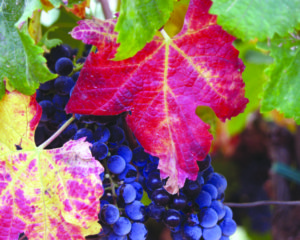
A grape is the fruit that grows on the woody vines of the family Vitaceae. Grapes grow in clusters of 6 to 300, and can be black, blue, golden, green, purple, red, pink, brown, peach or white. They can be eaten raw or used for making jam, grape juice, jelly, wine and grape seed oil. Cultivation of grapevines occurs in vineyards, and is called viticulture. One who studies and practices growing grapes for wine is called a viticulturalist.
Raisins are the dried fruit of the grapevine, and the name actually comes from the French word for “grape”. Wild grapevines are often considered a nuisance weed, as they cover other plants with their usually rather aggressive growth.
The leaves of the grape vine itself are considered edible
and are used in the production of dolmades.
Grapevines are used as food plants by the larvae of some Lepidoptera species – see list of Lepidoptera, which feed
on grapevines.
Seedlessness
Seedlessness is a highly desirable trait in table grape selection, and seedless cultivars now make up the overwhelming majority of table grape plantings. Because grapevines are vegetatively propagated by cuttings, the lack of seeds does not present a problem for reproduction. It is, however, an issue for breeders, who must either use a seeded variety as the female parent or rescue embryos early in development using tissue culture techniques. There are several sources of the seedlessness trait, and essentially all commercial cultivars get it from one of three sources: Thompson Seedless, Russian Seedless, and Black Monukka.
All are members of Vitis vinifera.
No Comments
Leave a comment Cancel